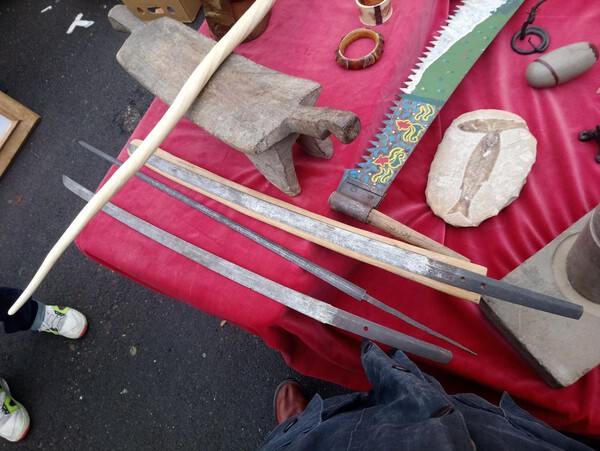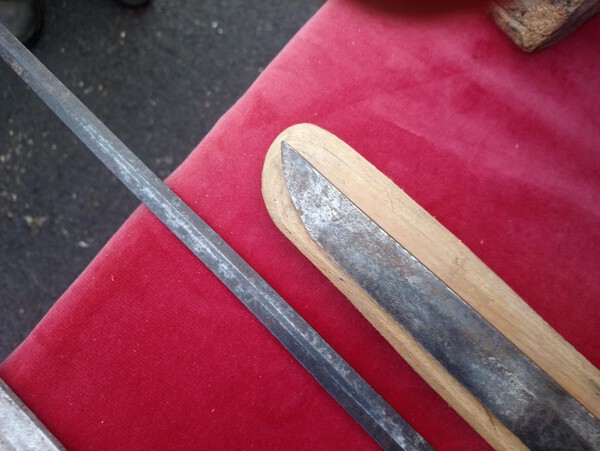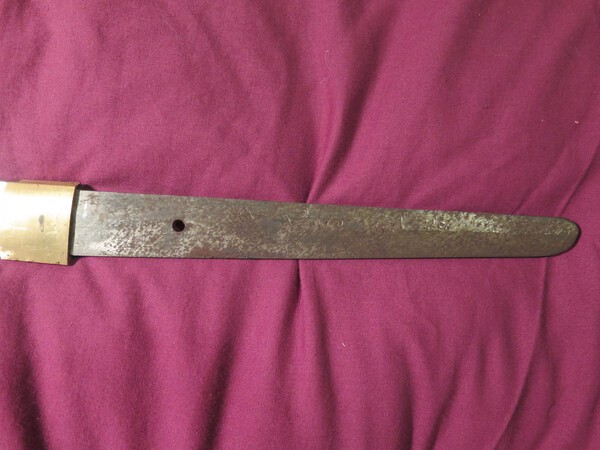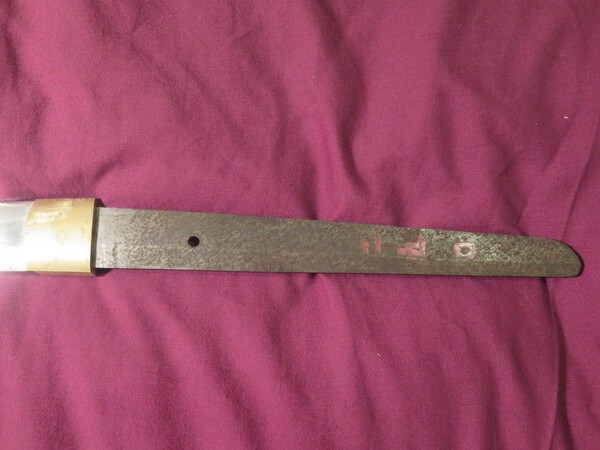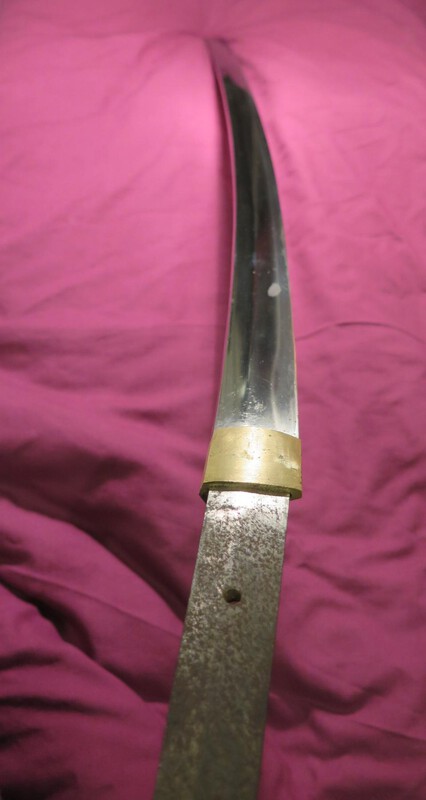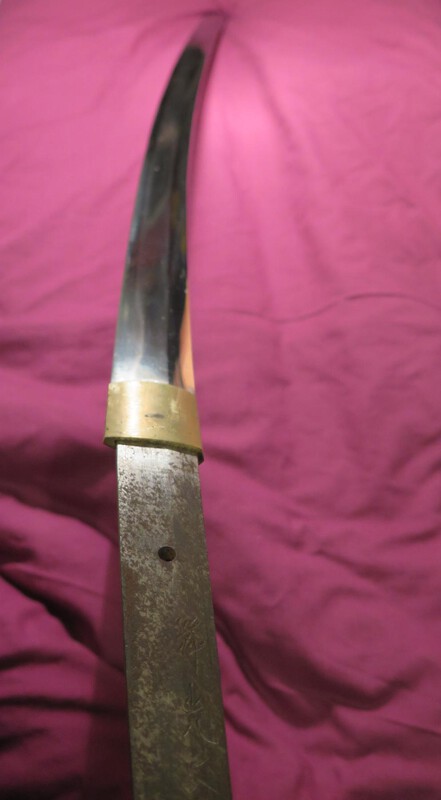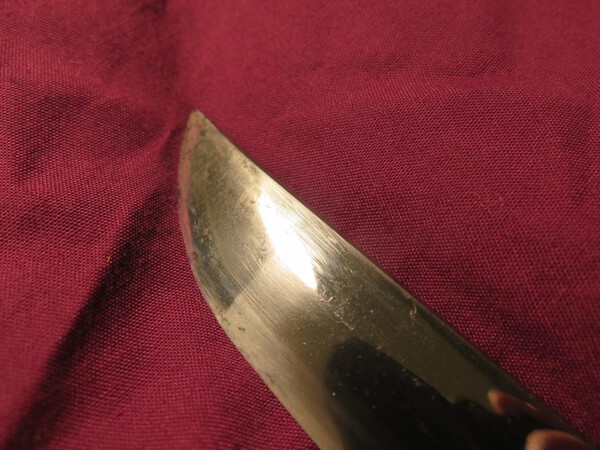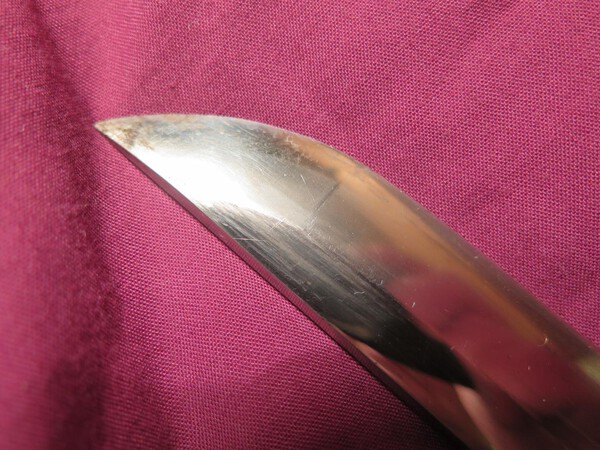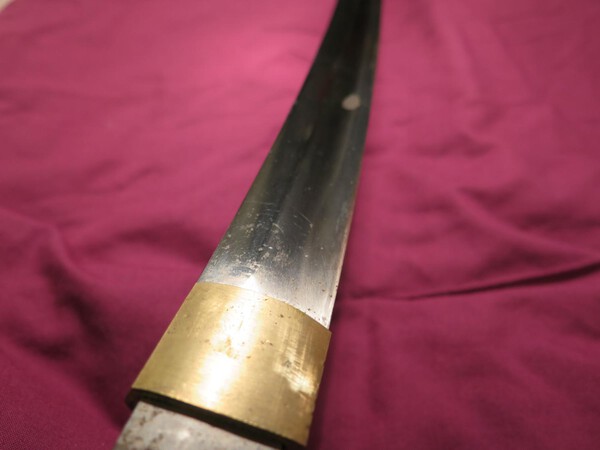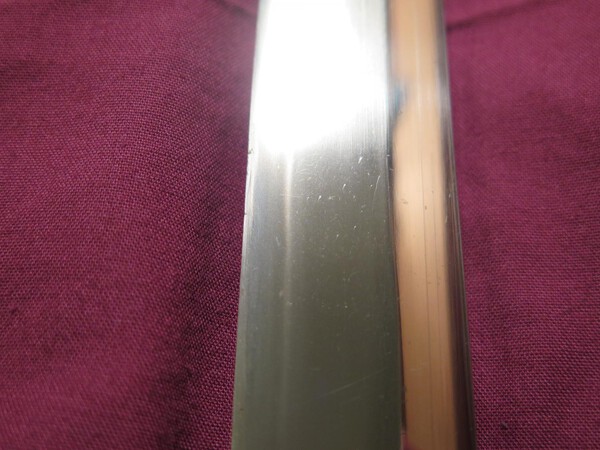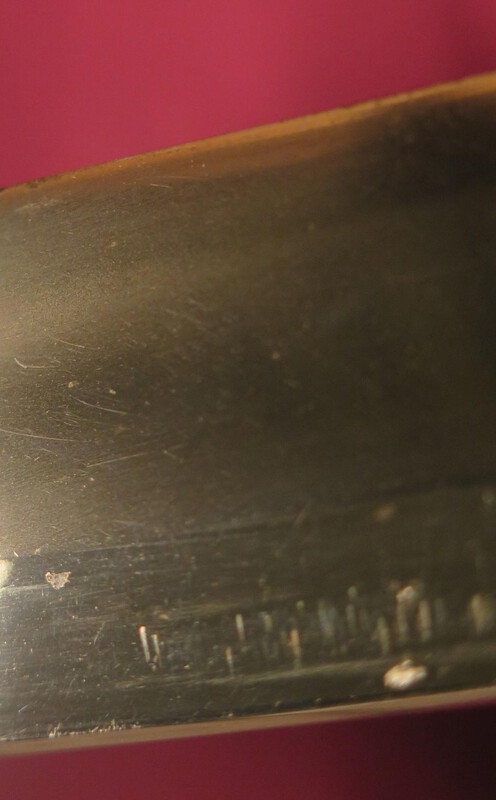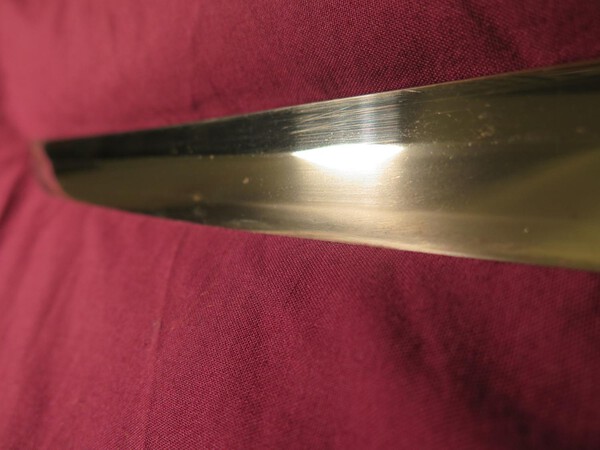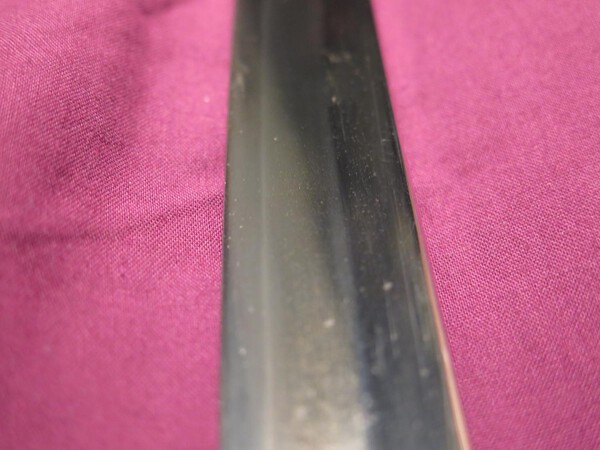-
Posts
306 -
Joined
-
Last visited
Content Type
Profiles
Forums
Events
Store
Downloads
Gallery
Everything posted by Jon MB
-

type 19 kyu gunto dress swords, i love them.
Jon MB replied to lonely panet's topic in Military Swords of Japan
Cool, many thanks Having kids is great, but expensive... Regarding these sabres, I think interest will grow over time, as they become relatively more scarce. We shall see.. -
Peter, Stephen, thank you for your comments. Sometimes I want to mention on this site that newbies could benefit from getting used to handling not only old swords, but also antiques in general, to get a feel for how objects undergo subtle changes as they age and how patina develops, experience that can assist in evaluating swords or fittings in less than mint condition. Peter, very interesting observations on the Japanese sword world and the distribution of Japanese swords in the rest of the world.. So we like the rapier?...It was $100... Btw, Diagonally across the swords, in pic 1, is a handy multipurpose narwhal ivory.
-

type 19 kyu gunto dress swords, i love them.
Jon MB replied to lonely panet's topic in Military Swords of Japan
Hamish, I dig this (oldish) thread..Anything more recent acquisitions to add? -
Sure thing Stephen. I overcame the impulse to buy, it was cheap enough to be tempting. Just to examine it in detail.
-
Wildly off-topic, nihonto-wise, but a shot of some European pattern-weld steel work, from an early 19th C. piece I found in the same market.
-
Peter, in the name of science, I will ask the price of that fine saw. The pointy thing is a rapier blade, probably French, late 17th C. I think.
-
Thank you very much for the Mei assistance Raymond and John. The seller's offer of $1000 did not excite me. I was indeed guessing a Kanbun era smith or similar. Happy New Year (soon) to all!
-
Hello, Any mei assistance appreciated. Fujiwara..? (Seller's words) Pics from phone, terrible I know.. Many thanks for any assistance... Jon B
-
regarding this blade, not sure I see the Mantetsu connection.
-
Looks like a score...but no one here is going to like the look of that liquid that appears on the tang in pic 2....don't 'clean' or scrub anything, but gently but wipe off any liquids..no doubt you have already.. Scabbard looks like a mis-match on the larger piece..
-
Thanks Chris. I thought it might be. I was implying that it was a late war substitute of some type.
-

Movie Sword (Merry Christmas Mr. Lawrence)
Jon MB replied to vajo's topic in Military Swords of Japan
The high camp in the prison camp film. -

Movie Sword (Merry Christmas Mr. Lawrence)
Jon MB replied to vajo's topic in Military Swords of Japan
My guess would be genuine war capture, brass having been polished up by props dept. Or were there already repros floating around in 1983? I imagine fewer than now.. -
So, yes, after having the chance to sit down and study the blade, it seems traditionally made.
-
Klaus, many thanks..
-
Muji hada -hard to say if I think this is a traditionally made blade or not. It's all quite simple, not much activity, but it looks like nie in the hamon. Haven't had a chance to handle this type before.
-
Looking at the blade, and had a read of this.. Differences between Oil quench and Water -Chris Bowen -2010 The differences in appearance are difficult to describe but in general, a western steel or non-tamahagane blade that is oil quenched will have very little to no nie, no activity, and usually hard, shiny points or spots in the peaks of the hamon if done in gunome, sanbon sugi, etc. Usually they are done is suguba with a painted on or acid etched look to them. The habuchi is indistinct. The other thing to look for is the hada. If there is no hada then it is not a forged blade. If the blade was not forged it means it was mass produced and not tamahagane. Water quenching takes much more skill than an oil quench and consequently oil was used almost exclusively for mass production. It bears mentioning that there were blades made of steels other than tamahagane that were forged and water quenched. Hayama Enshin, Miyamoto Kanenori, Horii Toshihide, Miyaguchi Kunimori, to a few of the more prominent smiths, are known to have done this. When viewing these blades, one is struck by the absence of activity in the hamon. Usually, a simple suguba with next to nothing going on in the hataraki department.... It appears that two ingredients are necessary to create an active ji-ba: tamahagane and a water quench. I have had conversations with modern Western blade smiths who tell me they can get all kinds of activity with western steel and oil quenching but I would attribute this to their deep knowledge of metallurgy and the time to experiment. Both quantities most WWII amateur smiths lacked.... There are other things to look for as well if the hamon and hada are not visable, chiefly the presence of the showa, seki, and other stamps (other than the star stamp), the smith's reputation, the quality of the mei and the nakago finishing. Most professional smiths did not make oil quenched mass produced gunto. Jumei Toshi were making blades for the military under contract and provided with tamahagane. These are usually star stamped later in the war. Known smiths with a known teacher-student lineage did not, in general, make oil quenched blades. If the mei is well cut and the nakago well shaped and finished, it is probably a sign that the blade was not mass produced. Most mumei WWII era blades were not made by professional smiths; though there are the rare exceptions, usually it is a mass produced blade or a blade that failed inspection. Again, there are always exceptions, but there general rules will usually get one by. I can not stress enough how important it is to see high quality gendaito by professional smiths to train your eye. It may come as a surprise but a first rate blade by the likes of Horii Toshihide, Tsukamoto Okimasa, Kajiyama Yasunori, Yoshihara Kuniie, etc., looks very much like older work- beautifully active ji-ba with crisp filework and good proportions. If you learn to recognize what quality is you will know, irregardless of period, if it is a blade worth spending time with.... http://www.militaria.co.za/nmb/topic/5572-visible-differences-between-oil-quench-and-water-quench/
-
Also after a copy, many thanks.
-
Ikkōsai Kanetoshi Thank you Steve M, but I didn't find him yet, on the net at least...(poor research skills..)
-
-
-




